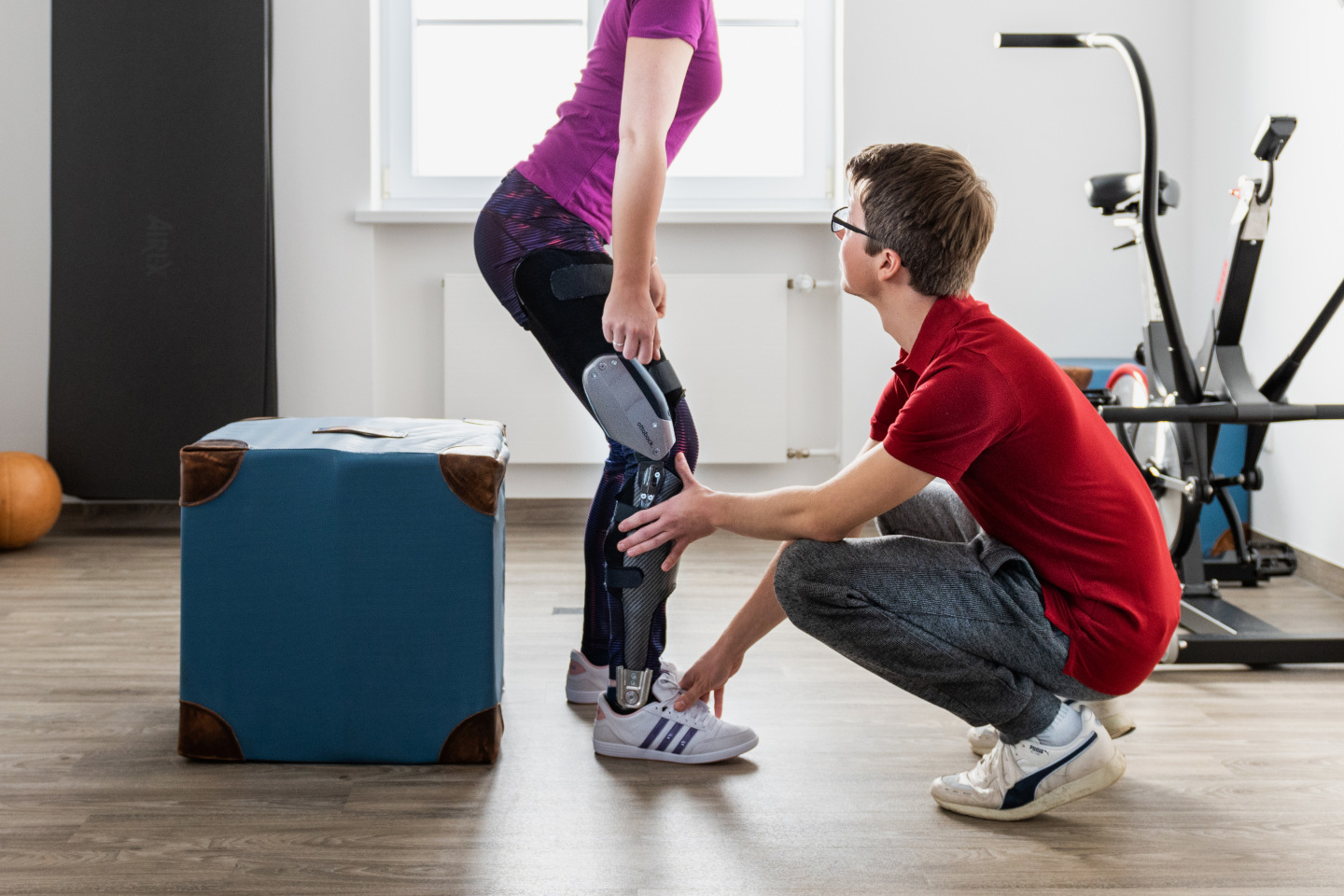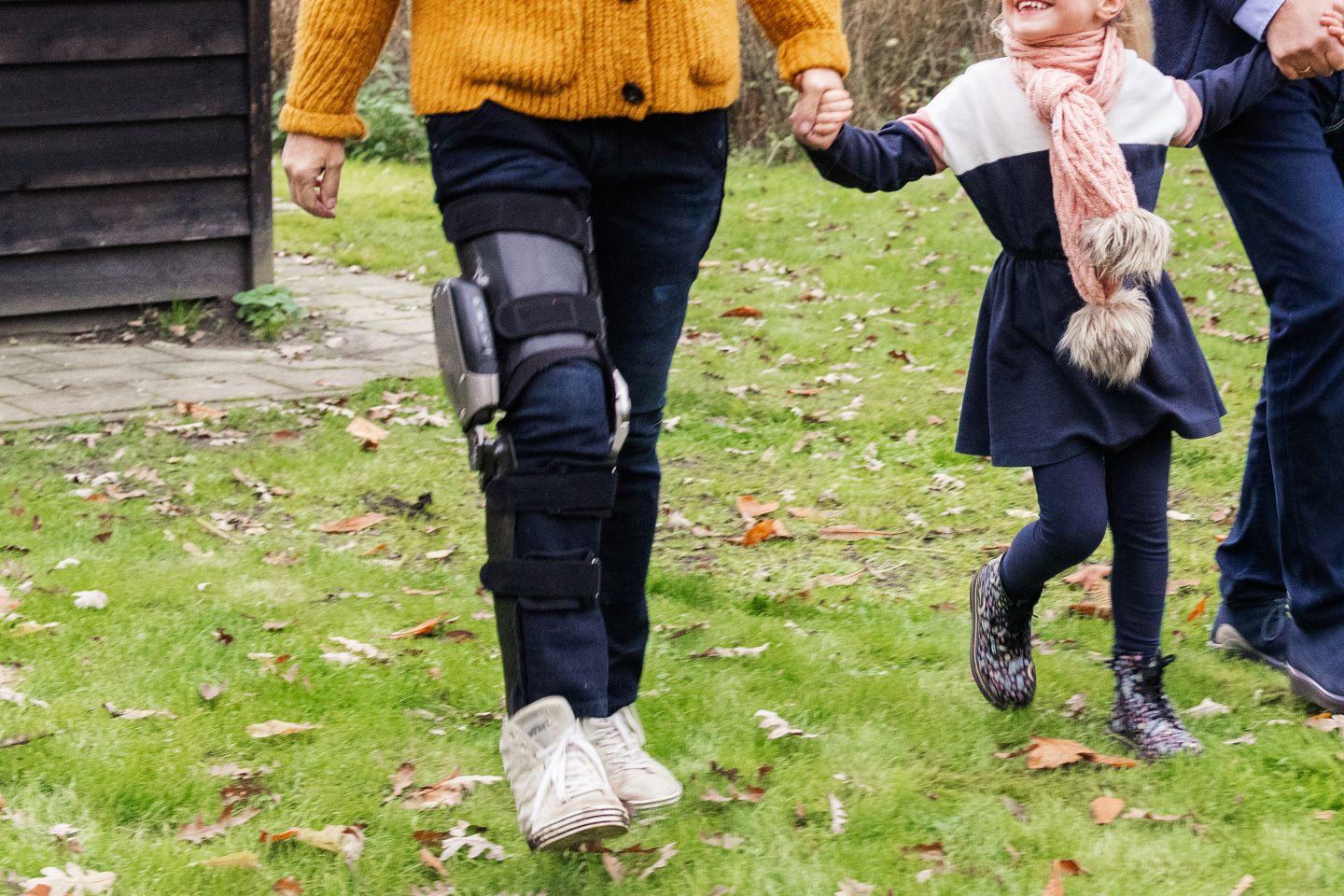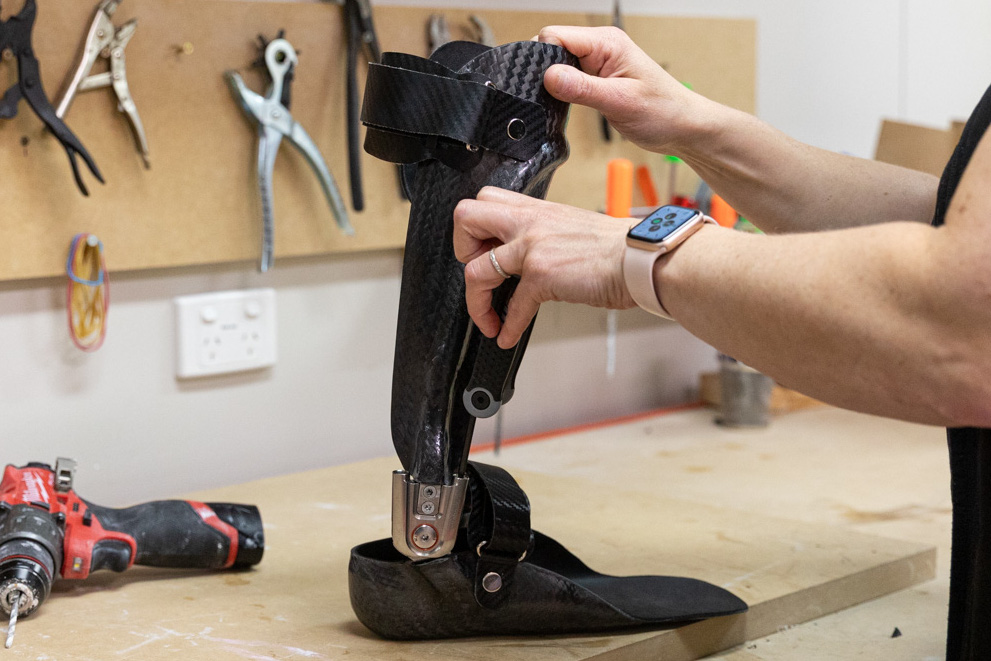We often witness how advanced orthotic technologies can transform lives.
One particularly inspiring case involved a patient diagnosed with Hereditary Sensory Neuropathy—a condition that affects the peripheral nervous system and severely impacts sensation, muscle strength, and motor function.
This patient faced significant challenges in both lower and upper limb mobility, leading us to explore how a pair of bilateral C-Braces could revitalise his mobility and independence.
The Journey to the C-Brace

Initially, the patient was not suited for the C-Brace due to limited core strength, stability and funding delays.
To ensure we kept the patient moving, we prescribed stance control KAFOs (Knee-Ankle-Foot Orthoses), enabling him to lock his knees for stability during walking.
Supported by two crutches and extensive physiotherapy, he diligently worked to strengthen his core and improve his gait.
This foundation paved the way for the patient to progress to the C-Brace, a highly advanced orthosis designed for dynamic mobility. Unlike more basic stance control KAFOs, the C-Brace provides more than just stability—it allows adaptive movement on inclines, declines, and uneven surfaces, all while enabling hands-free mobility.
Understanding The Upgraded Prescription

While the initial KAFOs helped the patient walk with two crutches, they posed limitations:
- He required assistance to strap his hands to the crutches, preventing independent tasks like paying for items or carrying objects.
- Navigating inclines and declines was precarious due to limited support during gait cycle transitions.
The C-Brace addresses these challenges by:
- Freeing the hands: With a single crutch—or no crutches—the patient can use his hands for daily tasks.
- Incline/decline support: Sensors within the C-Brace detect gradients, adjusting knee resistance to enhance safety and control.
- Stance yield and advanced features- The C-Brace will flex slightly on each step simulating more normal walking. This feature always enables the patient to ‘ride the braces down’ to sit down and potentially descend stairs more easily. These features aren’t available in other KAFO devices.
What About Upper Limb Technology?

Although upper limb orthotic technology exists, its application is more complex due to the intricate range of motion required in the arms and hands. This patient’s goals and condition leaned more towards lower limb supports.
Current solutions are a tad cumbersome making them less practical than lower limb devices.
Trial and Adaptation
During the C-Brace trial, the patient showed significant improvement in walking on inclines and declines.
The process required customised adjustments, as the trial units were too bulky for bilateral use. By casting the orthoses into a slimmer design, we tailored them to meet his unique needs. The patient expressed excitement and optimism, remarking on the potential to transform his quality of life.
C-Brace Outcomes
For this patient, the bilateral C-Brace offers a profound lifestyle shift.
They were then able to achieve their goals of:
- Spending more time upright and walking, reducing reliance on a wheelchair.
- Increased independence, such as ordering a drink at a bar without assistance.
- Enhanced social interaction, as upright mobility facilitates face-to-face communication.
Iterations to the C-Brace Since Release
The C-Brace has seen significant updates, including a new version that eliminates the need for a medial support joint.
This innovation reduces bulk and weight while maintaining stability, demonstrating the ongoing evolution of orthotic technology.
Orthotics like the C-Brace are redefining possibilities for individuals with mobility impairments.
As technology continues to improve, the potential for greater independence and quality of life only expands. At Orthotics Plus, we’re proud to be part of these life-changing journeys.
Suitability
The suitability of a bilateral C-Brace depends on the patient’s condition. In this case, the patient’s symmetrical neuropathy necessitated bilateral support.
For others, conditions like stroke or spinal cord injuries may require asymmetrical solutions tailored to specific weaknesses.
If you’d like to learn more about advanced orthotic solutions or discuss your mobility needs, get in touch with Orthotics Plus today.